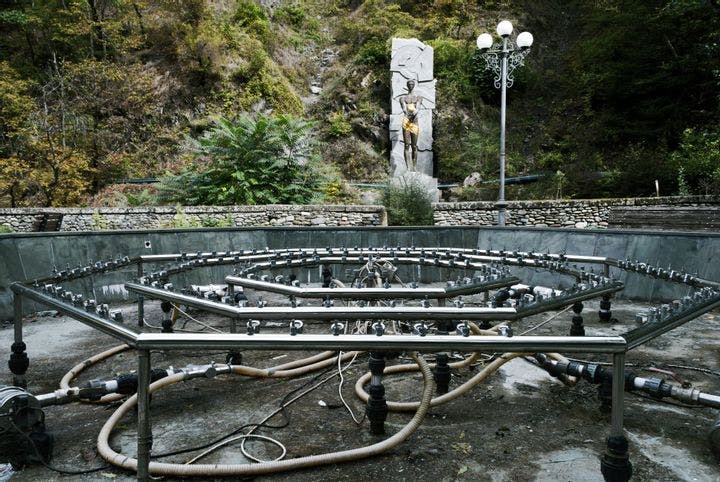Summer 2009
No Double Beds for Boris
– The Wilson Quarterly
The Soviets mandated health spa retreats for their workers, but never quite understood that sometimes people just want to enjoy a little quality time with their spouse and family.
As is widely appreciated, the Russians have raised the bar very high for achievement in literature, music, ballet, and battle. Less well known, writes Diane P. Koenker, a historian at the University of Illinois, Urbana-Champaign, is that during the Soviet era they made a revolutionary contribution to leisure. In 1922, well in advance of other industrialized nations, the Soviet Union stipulated that all workers were entitled to a two-week annual paid vacation.
Unfortunately, the visionary Soviet concept of worker vacations got entangled in communism’s indifference to the role of the family and its cluelessness about sex. The Soviet vacation evolved into a solitary medical rest period, a model from which it suffered throughout its 74-year history.
The Soviets devised vacations as a “medically necessary antidote to the harsh conditions of industrial labor,” according to Koenker. They built monumental (and expensive) health spas offering suntanning, mineral water and seawater baths, massages, diets, and an obligatory “dead hour” for naps. Recreation consisted of volleyball, lectures, slide shows, and “lots and lots of dancing.” To try to meet demand, state officials built simpler facilities—rest homes and tent camps with cots and a central area for do-it-yourself meals.
Access to a vacation required possession of a voucher passed from central trade union authorities to local union organizations to local enterprise committees. Some vouchers were awarded for meritorious service or given to workers in great need, and the others were sold for a percentage of their face value. There were never enough to go around, and it was virtually impossible for a couple to get two vouchers to the same place at the same time. Children were forbidden at most spas and rest homes.
After World War II, construction of vacation facilities, which had ceased during the war, recommenced and expanded, and in 1963 the health spa planning agency commissioned its first and only market research survey to determine how Soviet citizens wished to vacation. A completely unexpected 72 percent said they would like to travel from one place to another, not sit in one spa. Some 45 percent wished to vacation with their families, and 41 percent with friends or coworkers; only 15 percent said they preferred being with strangers.
Even so, tourism officials still called for building expensive spas and rest homes that shut out children, claiming that expansion of family facilities would require “huge preparatory work,” a phrase Koenker describes as “code for foot-dragging.”
The earliest Soviets had harbored utopian dreams of the withering away of the family (along with the state). But both the family and, especially, the state refused to comply. Nonetheless, tourism officials remained addicted to building spas even as the public clamored for swing sets. Soviet leaders never did come to grips with family life and sexuality. To the end, Koenker writes, the beds in Soviet hotels were always single and narrow.
THE SOURCE: “Whose Right to Rest? Contesting the Family Vacation in the Postwar Soviet Union” by Diane P. Koenker, in Comparative Studies in Society and History, April 2009.
Photo courtesy of Flickr/Malcs P
